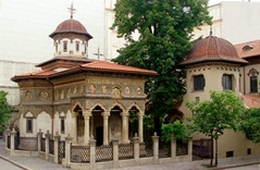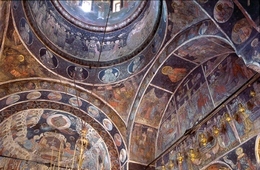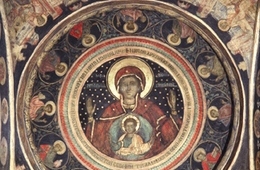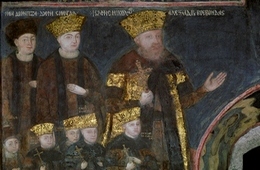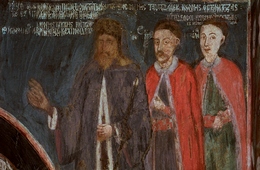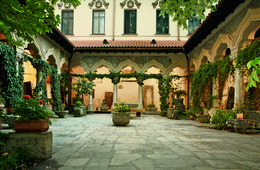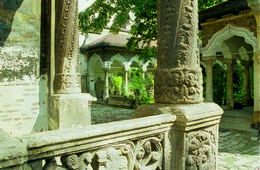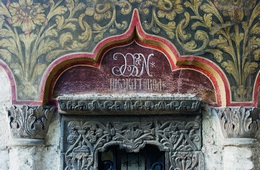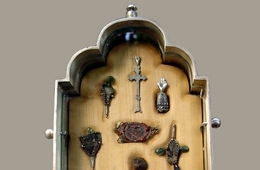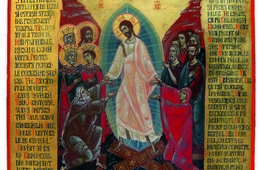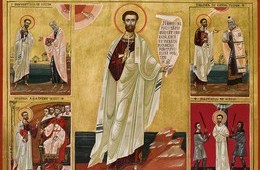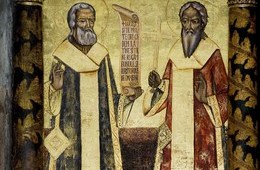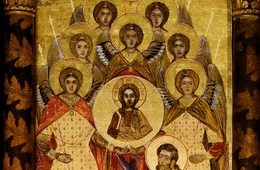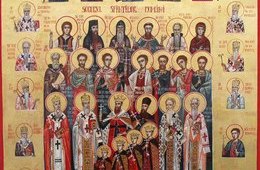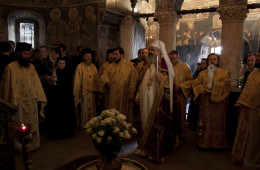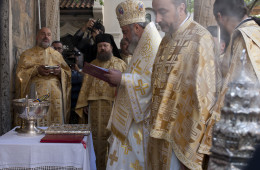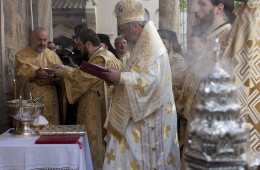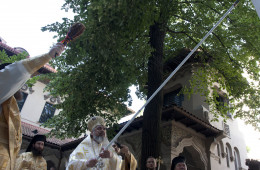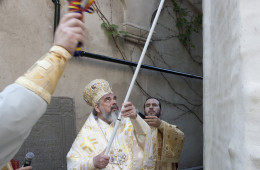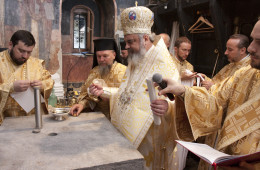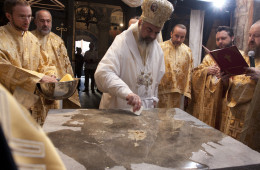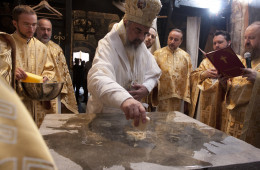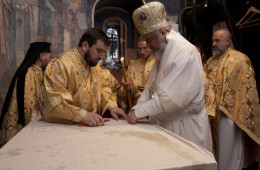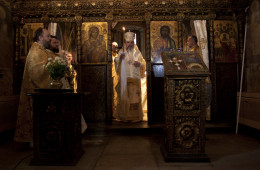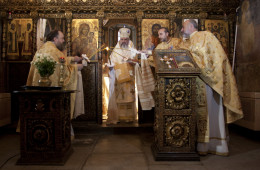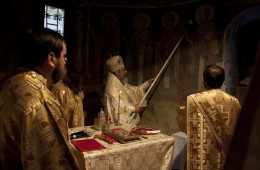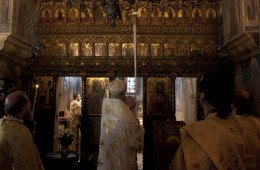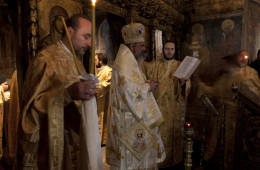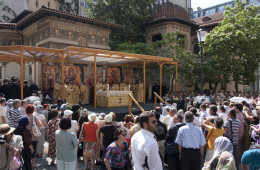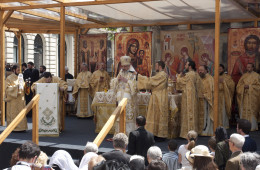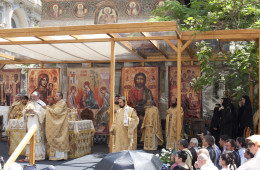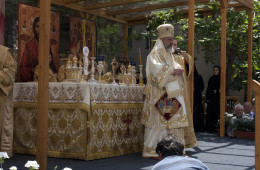The Church of Stavropoleos Monastery
Stylistically, Stavropoleos ensemble belongs to Brancovan epoch. Its stone decoration, furniture, interior and exterior murals make it the epitome of that period in the history of Romanian art. Although small in size, the church has monumental appearance, as an architectural space specific to Byzantine tradition. By its sculpted decorative and ornamental motifs, the church expresses both a baroque sensibility and an oriental taste.
The interior murals are impressive in their amplitude as well as the concentration of their iconographic programme. In the nave the Angelic Liturgy, painted at the base of the spire, and the Four Evangelists can be remarked while in the lateral apses the Parousia, or Second Coming, can be seen on the south side, and the Resurrection and Harrowing of Hell, on the north side. Next to Deisis, in the lower register, military saints are depicted. On the west wall of the nave there are scenes from the life of the Saviour and the Mother of God, displaying profound theological meanings. In the upper register of the narthex the Akathist Hymn to the Mother of God, a specific topic of Orthodox iconography, and also melodists can be seen, and in the dome, the Mother of God with the Child. Martyred women saints are depicted in the jambs of the windows. The west wall is reserved for portraits of the founders: Metropolitan Ioanichios and his brothers, and Prince Nicolae Mavrocordat and his family. They are surrounded by the Metropolitan Daniil of Hungro-Wallachia, boyar families, and other donors. In the porch there are murals depicting the Ecumenical Synods, St John the Baptist, and the miracles of the Archangel Michael, whose greatness is rarely encountered in Romanian art. The iconostasis, crowned with the Crucifixion, is divided into three registers – the Messianic Prophets, the Apostles, and the Great Fests – with Jesse, one of the forefathers of the Saviour, at their base. Among the carvings of the porch, the balustrade stands out as a remarkable achievement of mediaeval Romanian art. The exterior murals and the spire were remade at the beginning of the twentieth century and harmonized with the stone decoration which replaced the old stuccowork. The names of the mural painters and stone carvers are not known, only that of Iordan the stucco maker.
In the nave of the church, next to the iconostasis, there is a casket containing particles of the relics of saints venerated by the Eastern Orthodox Church: St Andrew the Apostle, St Peter the Apostle, St Ignatius Theophorus, St Martyr Justin the Philosopher, St Basil the Great, Right-victorious Great-martyr St Pantaleon, St Theodore Stratelates, and Right-victorious Martyr St Haralambos.
Overtime the church received new patrons, so that the old icons of the iconostasis did not include all patron saints. In the 19th century, the church dedicated by its founder from the beginning to the Holy Archangels and St Athanasius the Great took St Charalambos as patron saint. In 2008, when the monastery reopened, His Beatitude Daniel, Patriarch of the Romanian Orthodox Church, offered a new protector, St Justin Martyr and Philosopher. The icons on the lateral sides of the iconostasis and both the icons on the lectern (Synaxis of all Romanian Saints and Synaxis of the Saint Archangels) and the prayer icons are pained by contemporary painters, close to our monastery: Ion Grigorescu and Camelia Munteanu.
After more than 20 years of restoration work the church of Stavropoleos Monastery was reconsecrated at the Feast of the Holy Trinity on June 4, 2012. His beatitude Patriarch Daniel together with a group of priests celebrated the service of consecration of the church.
On that occasion, a new kivotos was realized, a project created by architect Livia Caltia

